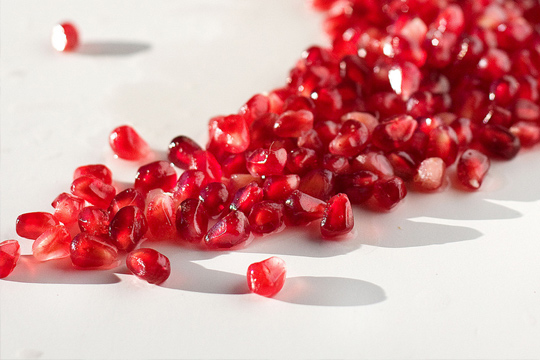
Reducing Food Waste in Foodservice
October 16, 2018 by Doreen Garelick, Dietetic Intern
Our intern Doreen attended a food waste summit for restaurants and compiled these tips to help food service operators redirect…
Nutrition 101
August 2, 2012

Culinary Nutritionist Andrea Canada explains which of your foods contain phytochemicals and how different phytochemicals can potentially affect the human body.
On Tuesday I talked about antioxidants, why they’re good for us and some of the foods that contain them. What I didn’t mention is that antioxidants are actually part of a group of compounds called phytochemicals.
“Phyto” comes from the Greek word for “plant”, and so phytochemicals are essentially chemical compounds that can be found in plant foods like fruits, vegetables, beans and whole grains. In general, these chemical compounds give plant-based foods their distinctive color, smell and taste.
Because different phytochemicals are linked to different colored fruits and vegetables, eating a variety of colored fruits and vegetables will mean that you’re ingesting a variety of different phytochemicals. Each phytochemical potentially benefits your body in a different way, so it’s good to try and mix it up whenever you can. These different compounds are linked to the possible prevention of chronic diseases like cancer, heart disease, diabetes, and high blood pressure.
Another group of phytochemicals that are trendy nutrition buzz-words are polyphenols and flavonoids. These tiny compounds in plants are currently being researched around the world for their ability to function as antioxidants and prevent chronic diseases.
There are thousands of these tiny compounds in plants and scientists are only beginning to understand how they all work in our bodies or how they may interact with other compounds in foods. For example, studies have shown that flavonoids can boost the antioxidant capacity of cells when ingested with a source of Vitamin C or E (a food synergy!).
Therefore, as I mentioned before, I would recommend eating a variety of different fruits, vegetables and other minimally processed foods to benefit from as many of these potentially powerful compounds as possible. Some examples of foods (and beverages) containing polyphenols include apples (with the skin), grapes, berries, citrus, pomegranate, onion, garlic, cabbage, cauliflower, broccoli, tea, and a few of my favorites, red wine, beer and chocolate.

October 16, 2018 by Doreen Garelick, Dietetic Intern
Our intern Doreen attended a food waste summit for restaurants and compiled these tips to help food service operators redirect food waste from landfills.
Nutrition 101

Nutrition 101
September 26, 2018 by Doreen Garelick, Dietetic Intern
Ever notice headlines about rapid weightloss? Dietetic Intern Doreen Garelick looks deeper into a recent eye-catching headline to see if there's any truth behind it.
Connect
 Follow us on Twitter
Follow us on Twitter Friend us on Facebook
Friend us on Facebook Follow us on Pinterest
Follow us on Pinterest Follow us on Instagram
Follow us on Instagram Read our Blog
Read our Blog Watch videos on YouTube
Watch videos on YouTube Watch videos on Vimeo
Watch videos on Vimeo Connect with us on Linkedin
Connect with us on Linkedin Find us on Foursquare
Find us on Foursquare
Tweets by @SPEcertifiedBlog Search
Categories
SPE Certified Newsletter
Sign up for news on the latest SPE-certified venues, events and SPE updates.
We will never share your personal information with a third party.